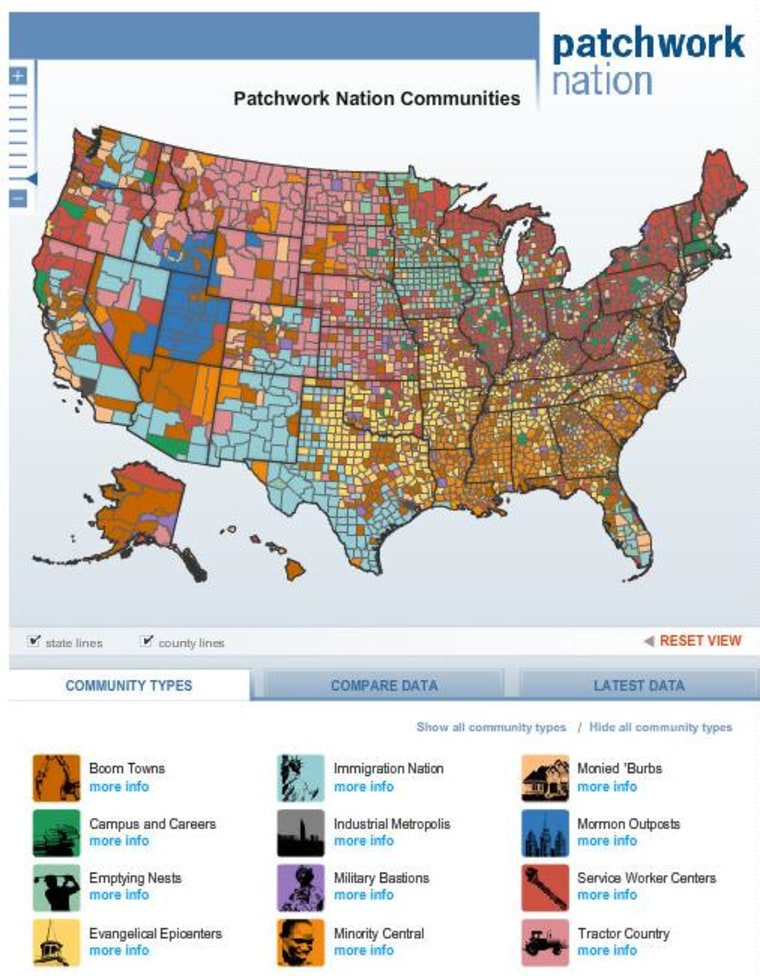Guest post by Dante Chinni
Knowing your battleground states is crucial to understanding a presidential election, but if you want to get at the more subtle dynamics driving the campaign you have to go deeper. In Florida, Miami’s distance from Jacksonville is about more than just miles. And Ohio not only holds Cleveland and Columbus, but also the state’s Appalachian south.
In the coming months NBC’s political team will explore those electoral nuances using Patchwork Nation, a reporting effort created by journalist Dante Chinni that’s part of the Jefferson Institute in Washington DC. Patchwork Nation uses demographic data to break the nation’s 3,100-plus counties into 12 different types of voter community; then uses those community types to analyze data – everything from unemployment rates to latest poll numbers on a candidate’s “likeability.”
Patchwork Nation’s types breakdown as follows: Industrial Metropolis (think Philadelphia), College and Careers (Johnson County, IA) and Monied Burbs (Fairfax County, VA), which make up the core Democratic coalition counties; Minority Central (Wilson, NC), Immigration Nation (Maricopa, AZ), Military Bastions (Norfolk, VA) and Service Worker Stations (Richland, OH), which make up the competitive counties; and Empty Nests (Lake, FL), Boom Towns (Clark, NV), Evangelical Epicenters (Christian, MO), Tractor Country (Sioux, IA) and Mormon Outposts (Cassia, ID), which make up the core Republican coalition counties.
These types won’t give you a simple answer as to what will happen in November. By most any accounting the 2012 presidential campaign looks extremely close and margins and turnout (urban versus rural, rich versus poor) may well be decisive. But the looking at the election through these types shows fissures in the electorate that extend far beyond the red/blue divide. Some points to consider before the campaign kicks into high gear.
- Those Monied Burb counties, hold some 69 million people and the vote in them can swing dramatically. Barack Obama won them by more than 10 percentage points in 2008. That’s not likely to happen again. These are moderate relatively well-to-do enclaves should be good territory for presumptive GOP nominee Mitt Romney, but poll numbers show he still has work to do in them
- The collegiate Campus and Career counties that hold the some of the country’s best known colleges and universities were a big source of votes and volunteers for Mr. Obama in 2008. But enthusiasm out of them has been tougher to generate in 2012 – and it could matter in key battleground states.
- The nation’s small town Service Worker Center counties are generally distrustful government and reliably Republican, but they are also suspicious of big business. Mr. Romney’s wealth and investment house background could hurt him here. He’ll need them to be on board with his campaign in the fall.
About the author: Dante Chinni is author of Our Patchwork Nation: The Surprising Truth About the "Real" America. You can learn more about Patchwork Nation at http://www.patchworknation.org
